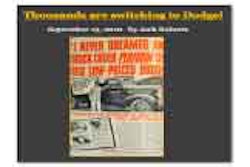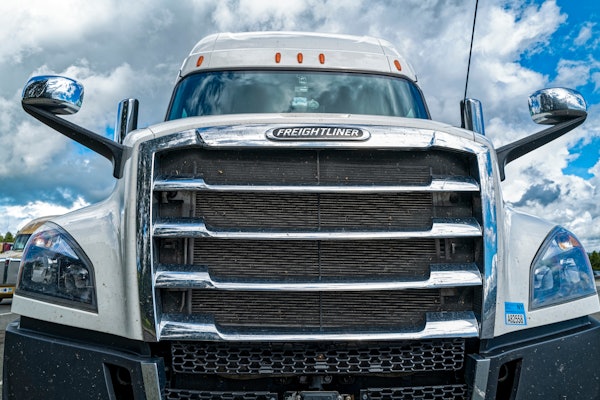The March of Time

In March 1911, CCJ published its first magazine aimed at helping “expressmen” running new-fangled “commercial cars” get up-to-date information on their new equipment and industry. Today, we take the accelerated pace of changing technology for granted, but 100 years ago, this was a new and bewildering concept.
For much of human history, change has been measured and slow: Thousands of years had passed since the invention of agriculture and the development of the steel plow. In 1911, an older man, gazing in wonder at an airplane in flight, likely could recall the first time he saw a steam locomotive pulling a train.
The technology of that time seems primitive by our standards, of course. As we prepared for this 100th anniversary issue last year, I took the opportunity to visit the Quals family in Cookville, Tenn., to test-drive some old trucks and see what trucking was like over the decades. Brothers Mark and David Quals, and their wives, Sue and Vickie, have been collecting antique trucks for decades and own a collection spanning almost 100 years.
One of the gems of this collection is a fully restored 1915 International Auto Wagon, an antique commercial car that instantly would have been recognizable to a CCJ reader 96 years ago. The technology here has more in common with a horse-drawn wagon than a modern truck. Still, on the open road, the Auto Wagon handles remarkably well. It’ll do about 25 mph flat out, but you’re completely exposed to the elements – so bugs, rain, dust and anything else Mother Nature throws at you are simply a fact of life.
At slow speeds, the Auto Wagon is an absolute beast to handle. Its turning radius is atrocious. If you have to make a tight turn, you’d better start planning for it well in advance. Its huge wagon wheels steer just fine – until you’re stopped or creeping along. Then you’d better have some serious muscle power at your disposal when you start cranking on the steering wheel. Couple all of these factors in with the truck’s jumpy transmission, and I was one highly nervous magazine editor with only one thought racing through his mind: You DO NOT want to wreck this irreplaceable 95-year-old truck!
The evolution of technology over the last century is remarkable.
The Quals also own a partially restored 1931 International A6 – a heavy-hauler that spent its working life hauling blocks in Chicago. Here, in just 16 years since the Auto Wagon, we see an almost quantum leap forward in trucking technology.
But that doesn’t mean driving a 1931 International A6 is easy; it’s a serious brute of a truck. It’s big. It’s slow. And nothing on it is power-assisted. But taken as a whole, the A6 is a fascinating truck to drive because it highlights the rapid advances that were taking place at that time. The vehicle is a wonderful mix of the technology that had gotten truck designers through their first two decades while hinting at much greater things yet to come.
CCJ is now a century old. It’s been an incredible honor to be a part of this editorial team as we’ve put this commemorative issue together and be a part of something that most journalists never will get to experience. I can’t help but wonder what stories, technologies and trends CCJ will cover over the course of the next 100 years. Or wonder if a future editor – someone who won’t be born for another 60 or 70 years – will one day read the stories I’ve written, chuckle at my take on the equipment technology or issues of our day, then attempt to find a 2011 antique truck to take for a test drive and write about that experience.
Either way, I am certain that they will find CCJ’s – and trucking’s – second century to be just as fascinating as we’ve found its first 100 years to be.
JACK ROBERTS is Executive Editor of Commercial Carrier Journal. E-mail [email protected] or call (205) 248-1358.











